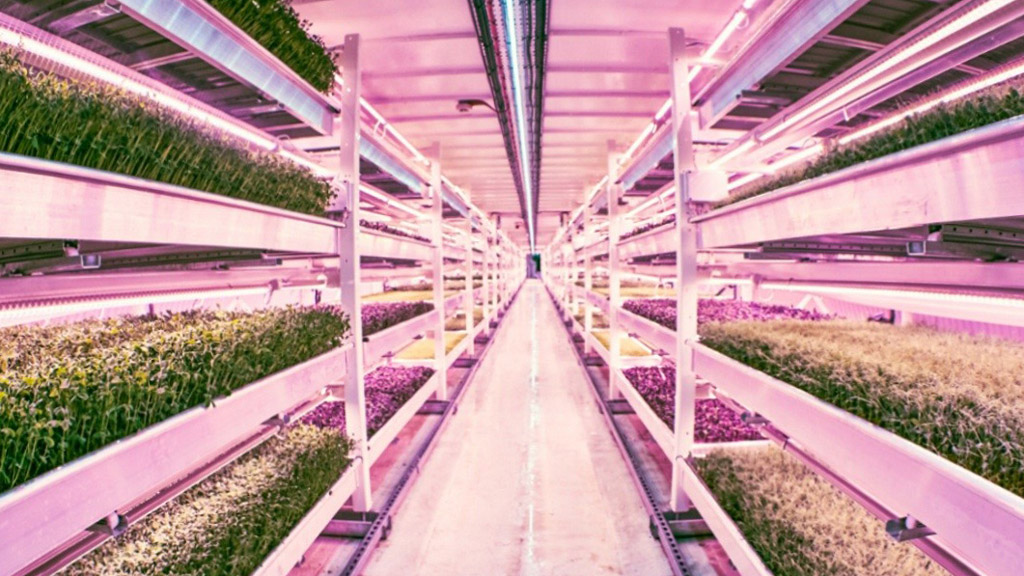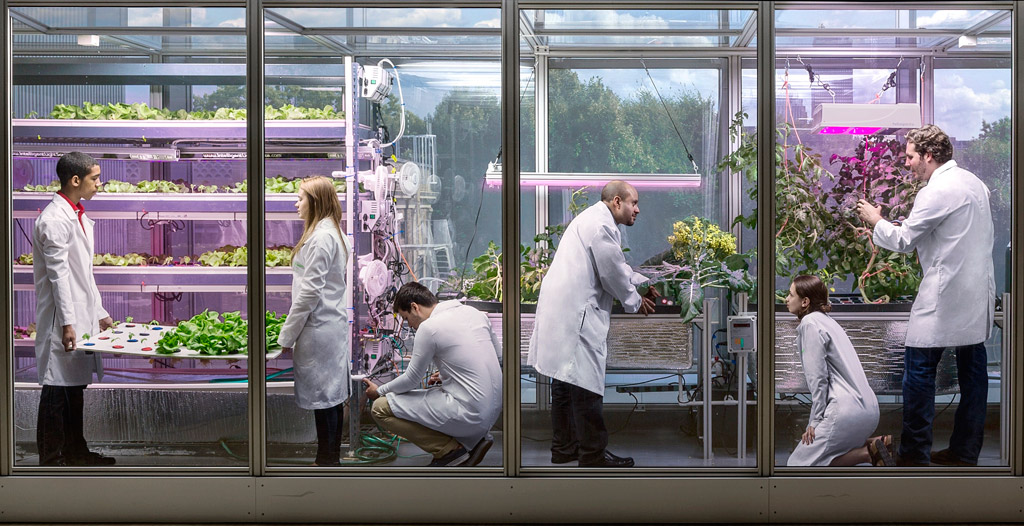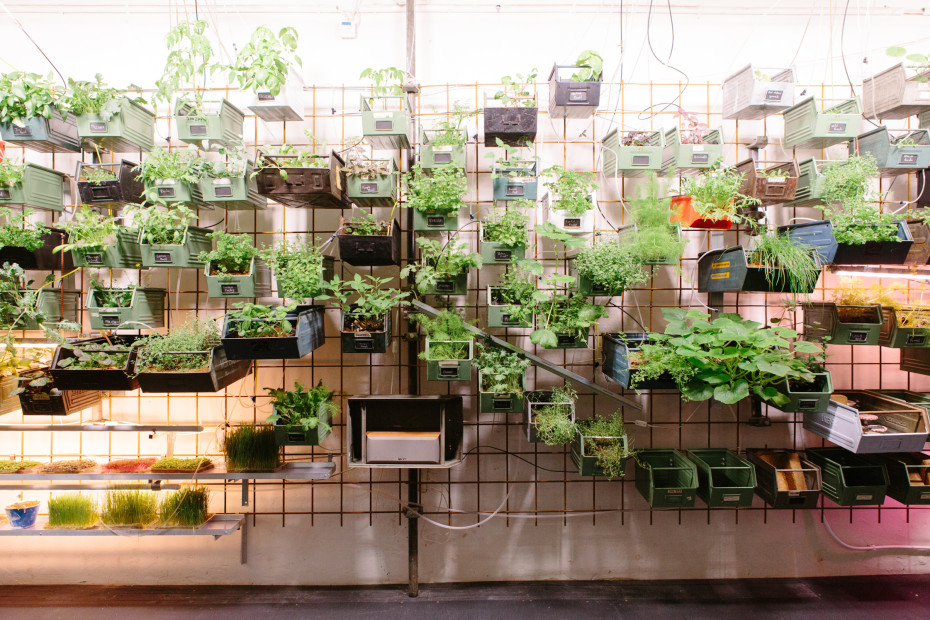Time to put into practice what I’ve learned over the last 5 months.
Why?
As I explained with a bit of a rant back in Week 1, it’s very difficult to get hold of fresh greens and herbs in Finland (particularly during the winter months), that aren’t wrapped in layer upon layer of plastic packaging.
I want fresh and tasty organic salad and herbs year round, without the impact plastic packaging and food miles.
How?
Using indoor growing techniques, fresh leafy greens and herbs can easily be grown locally according to demand, without the need for any plastic packaging, transportation, pesticides or preservatives.
What?
I will design and make a soil-less indoor growing system with an automated hydro-/aquaponic watering system, programmable lighting cycles that react to light levels in the room and an interface for controlling the system.
Feature list:
- Soil-less growing for leafy greens and herbs (eliminates pests)
- Automated ultraponic watering system
- Grow lights that respond to ambient light levels
- Programmable lighting and watering cycles
- An application for monitoring and controlling the system
Noteworthy Examples
Indoor growing systems are not new. There are many examples and variants out there (see Ponic Systems), from simple windowsill grow boxes to warehouse-scale growing facilities.
Four nice examples of growing systems that already exist are:
Growing Underground
 Growing Underground, London (photo: Growing Underground)
Growing Underground, London (photo: Growing Underground)
 OpenAg, MIT Media Lab (photo: MIT OpenAg)
OpenAg, MIT Media Lab (photo: MIT OpenAg)
 Infarm, Berlin (photo: Philipp Langenheim, Fruende von Freunden)
Infarm, Berlin (photo: Philipp Langenheim, Fruende von Freunden)
Ikea Krydda/Växer
My project will sit somewhere in the middle of these examples. A growing system for the home, with a level of automation and control over growing conditions, but not a completely closed environment.
The Build
Components:
- Tank
- Tray
- Mesh pots
- Water Level Sensor
- Fogging System
- Light Level Sensor
- Grow Lights
Components in bold will be made, others are stretch goals which will be completed if time permits, or otherwise added as ready components.
Tasks
Planning & Sourcing
- Plan the build schedule
- Source materials and components
Grow Tanks & Tray
- Machine main body and end parts for grow tank (with recesses & chamfers)
- Machine forming templates for hot-wire forming
- Form grow tank channel with hot-wire forming
- Bond tank ends and seal
- Test water-tightness
- Laser cut tray top, machine foam core and bond together
Water Level Sensor
- Make a capacitive liquid level sensor
- Test sensor
- Design and make a board to read from sensor
- Program the board
- Calibrate and final test
Grow Lights
- Design grow light array and LED driver
- Build and assemble
- Add control circuit
User Interface
- Connect to sensor board and read from it
- Control light level from UI and allow timing cycles to be programmed.
Bill of Materials
Grow Tank & Tray
| Item | Supplier | € | Qty | Total |
|---|---|---|---|---|
| 3mm Acrylic Black (914mm x 610mm) | Vink | 2 | ||
| Silicon Sealant (Black) | Clas Ohlson | 1 | ||
| Sugru 3 x 40g pack (Black) | Clas Ohlson | 1 | ||
| 18mm Birch Plywood (AA/BB grade) | Stark | 1 | ||
| Total | XX,YY |
Water Level Sensor & Ultrasonic Fogger
| Item | Supplier | € | Qty | Total |
|---|---|---|---|---|
| FR1 PCB Stock (4” x 6”) | 1 | |||
| Kapton Tape | Creative Tools.se | 1 | ||
| 3M Copper Self-Adhesive Tape | Lamtekno | 1 | ||
| Exo Terra Ultrasonic Fogger | Helsingin Akvaariokeskus | 48,90 | 1 | 48,90 |
| DHT22 Temperature & Humidity Sensor | Månsteri | 11,00 | 1 | 11,00 |
| OPTEK OP580 Phototransistor | Digi-Key | Obs. | 1 | - |
| Total | XX,YY |
Grow Lights
| Item | Supplier | € | Qty | Total |
|---|---|---|---|---|
| FR1 PCB Stock (4” x 6”) | 2 | |||
| SK6812 RGB Neopixel LED | Ebay | 45 | ||
| 0.1uF Capcitor SMD | 45 | |||
| 499 Ω Resistor SMD | 1 | |||
| 4-Pin Header | ||||
| Ribbon Cable (6 Wire) | Månsteri | 3,00 | 1 | 3,00 |
| Total | XX,YY |
Unknowns
- Will the grow tank hold water?
Schedule
Files
XXX (YYYkB) - ZZZ.zip
TODOs
☑ Propose a final project integrating a range of units covered in FA
☑ What will it do?
☑ Who has done what beforehand?
◻ What materials and components will be required?
◻ Where will they come from?
◻ How much will it cost (BOM)?
◻ What parts and systems will be made?
◻ What processes will be used?
◻ What tasks need to be completed?
◻ What questions need to be answered?
◻ What is the schedule?
Links
Fab Academy 2016 - Applications and Implications